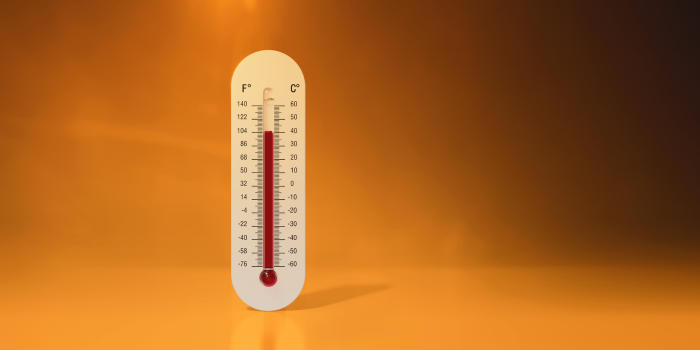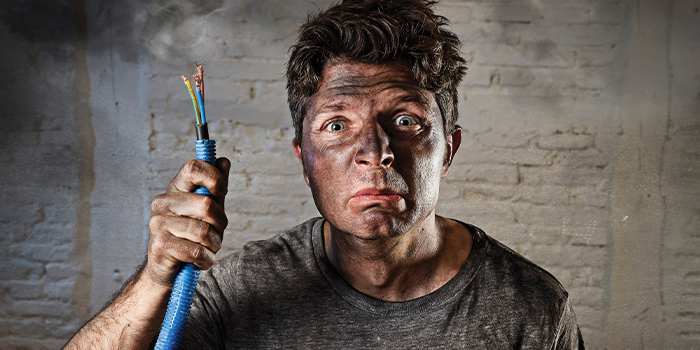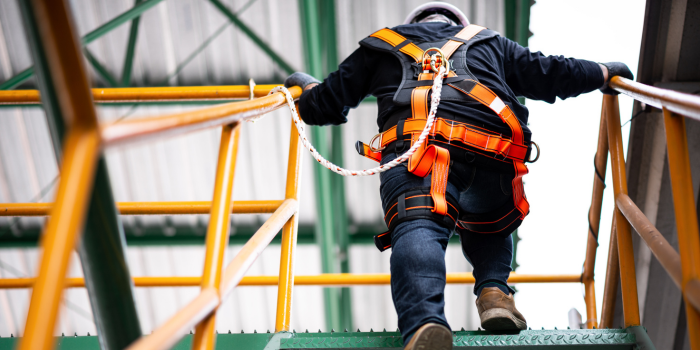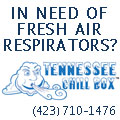OSHA Exclusive: Protecting Workers from Heat Illness
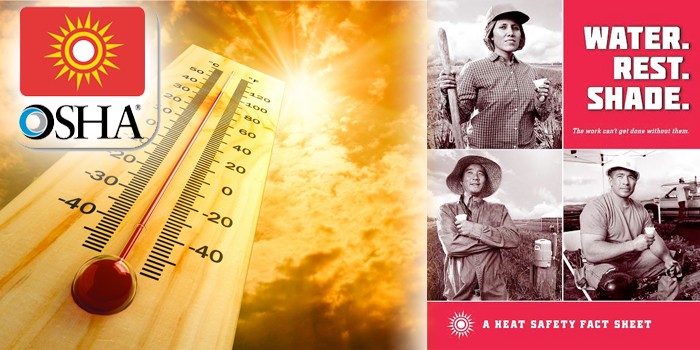
Avery Haas, a 41-year-old construction worker, died after working four hours re-roofing an apartment complex in Urbana, Illinois, in 2014. Temperatures that day reached 90 degrees Fahrenheit, with a heat index in excess of 100 degrees. The crew was working in full sunlight which increased the effective temperature to approximately 105 degrees. During their lunch break, crew members noticed that Haas was showing signs of altered speech and he became increasingly disoriented and exhibited irregular motor control. His coworkers transported him to a nearby hospital where Haas died of complications from heat stroke. His employer did not have an adequate heat illness prevention program and did not ensure that workers were getting enough water, rest, and shade. Nor did the employer train them in the prevention of heat illness.
Avery Haas' death and all heat-related tragedies are preventable. In response, the Occupational Safety and Health Administration (OSHA), in partnership with the National Oceanic and Atmospheric Administration and the National Weather Service, initiated a nationwide awareness campaign in 2011 to teach workers and employers about the dangers of working in hot weather and to provide valuable resources to address these concerns.
RELATED Spray Polyurethane Foam Alliance Encourages Proper Insulation and Seal of Buildings to Reduce Asthma Triggers, IFTI Announces Publication of CCMC Evaluation Report #14036-R, OSHA Schedules National Advisory Committee on Occupational Safety and Health, Construction Industry Employers, Workers to Emphasize Safety in 2016 National Safety Stand-Down to Prevent Falls, May 2-6
What Are My Responsibilities As
An Employer?
Employers have an important responsibility and legal obligation to provide safe working conditions. Here are some steps employers can take to prevent heat illness:
- Have a plan for incorporating heat illness prevention into worksite activities during hot weather.
- Make sure that workers have adequate drinking water. Remind workers to drink small amounts of water often (before they become thirsty). A good rule of thumb is to drink four cups of water every hour. It is best to drink a small amount of water every 15 minutes.
- Allow workers frequent breaks in cool, shaded areas.
-
Take steps that help workers become acclimated to the heat, especially workers who are new to working outdoors in the heat or have been away from work for a week. Gradually increase workloads or allow more frequent breaks during the first week or more.
- If workers are doing strenuous work, or wearing layers of protective clothing, take additional precautions — for example, schedule heavy tasks earlier in the day, monitor workers for signs of heat illness, and develop and enforce work/rest schedules.
- Train workers on how to recognize heat illness, how to prevent it, and what to do if someone gets sick. Encourage workers to watch each other for signs of heat illness.
- Be prepared for medical emergencies. Make sure that medical services are available. Workers who show symptoms of heat illness need immediate attention. Call 911. This can be a matter of life and death.
What Are The Signs and Symptoms of Heat Illness?
- Heat stroke is the most serious heat-related illness. The symptoms include heavy sweating or red, hot, dry skin; high body temperature; confusion; loss of consciousness; and/or convulsions. HEAT STROKE IS A MEDICAL EMERGENCY. CALL 911 if a worker shows any signs of heat stroke.
- Heat exhaustion is the next most serious heat illness. Symptoms can include nausea, headache, sweaty skin, cramps, fast heartbeat, dizziness, and weakness.
- Heat fatigue, heat cramps, and heat rash are less serious, but they are still signs of heat exposure.
Workers Can Beat The Heat: Three Simple Steps
There are simple steps workers can take to stay healthy while working in hot weather. Remember these three things: water, rest, and shade.
Water: Drink plenty of fluids throughout the day. Don’t wait until you’re thirsty to drink water. A good rule of thumb is to drink four cups of water every hour. It is best to drink a small amount of water every 15 minutes.
Rest: Take rest breaks often so you can cool down.
Shade: Cool down in the shade or an air-conditioned area.
Other ways workers can prevent heat illness include wearing light-colored cotton clothing; taking more breaks if wearing bulky protective clothing; using sunscreen to prevent sunburn; and avoiding drinks with caffeine or alcohol.
OSHA’s Heat Safety Tool provides workers and supervisors with vital safety information whenever and wherever they are – right on their mobile Android or iPhone. The app allows workers and supervisors to calculate the heat index for their worksite, and, based on the heat index, displays a risk level to outdoor workers. Then, a simple click provides reminders about the protective measures that should be taken at that risk level to protect workers from heat-related illness – reminders about drinking enough fluids, scheduling rest breaks, planning for and knowing what to do in an emergency, adjusting work operations, training on heat illness signs and symptoms, and monitoring each other for signs and symptoms of heat-related illness.
The tool is also available in Spanish for both types of phones. Simply set the phone language setting to Spanish before downloading the app. Both versions of the app are available at www.osha.gov/heat.
About OSHA: Under the Occupational Safety and Health Act of 1970, employers are responsible for providing safe and healthful workplaces for their employees. OSHA's role is to ensure these conditions for America's working men and women by setting and enforcing standards, and providing training, education and assistance. For more information, please use the contact details and links provided below.Disqus website name not provided.




